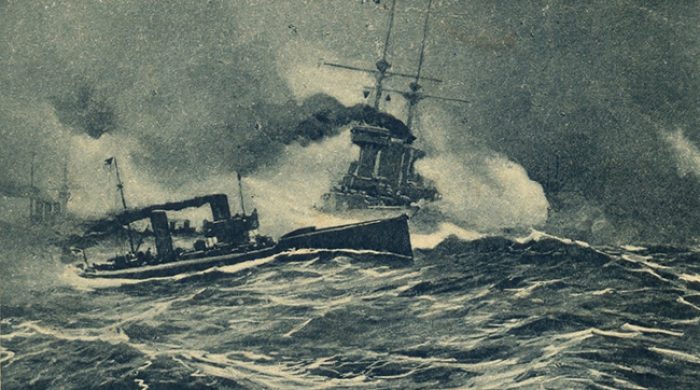The Battle of Jutland was the largest naval confrontation of the First World War. In fact, it was the only major naval battle of the war, and both the British and the Germans later claimed victory.
Reinhard Scheer was appointed to the command of the German Fleet in January 1916 and began a series of manoeuvres near the British coast. Scheer was convinced that the British could not decipher the codes used by the German fleet and believed that the British fleet, located at Scapa Flow in Northern Scotland, could not be deployed in time in the event of a surprise attack. But Scheer was wrong: the British deciphered all the coded messages of the Germans and were ready to respond to a naval attack.
The phases of the battle
Both fleets sailed in similar formations, with scouting groups in front of the main ships. The battle itself had five phases. In the first phase, Admiral Beatty, at the head of the British cruisers, faced the equivalent German force led by Admiral Hipper (May 31), which he pushed south in the path of the main German fleet.
In the second phase, Beatty retreated north, followed by German battleships. At this point, both sides considered that the battle was going according to plan (despite the fact that the English had already lost 2 ships). But the Germans were also in for an unpleasant surprise: believing they were involved in a pursuit that would end with the destruction of the British cruisers, the Germans suddenly found themselves bombarded by the fleet led by Admiral Jellicoe, which they wrongly assumed it would be too far out to engage.
British artillery forced Scheer to withdraw. The German admiral then tried a manoeuvre that could have ended very badly: he doubled back, hoping to slip past Jellicoe’s ships and return to the Baltic. Jellicoe slowed down, however, and the Germans realized that they were in front of the British ships. The German fleet was badly damaged in this confrontation and was again forced to withdraw.
In the final phase of the battle, after a night of intense fighting, the retreat of the German cruisers was covered by a few lighter vessels, while Admiral Jellicoe wasted precious time trying to avoid torpedo attacks.
The Germans lost a total of 11 ships, and the English lost 14 (and twice as many sailors). However, the rest of the German ships were heavily damaged, more so than the British, giving the latter an advantage.
The British navy failed to win a decisive victory, but neither Scheer’s plan to destroy a substantial portion of the enemy fleet succeeded.
Jutland was the last, and largest, of the naval battles of the war. Even though the British fleet lost several ships in this battle, the German fleet was weakened, eliminating the possibility that it could pose a danger in the future. The Germans realized that they could not challenge British rule in the North Sea.
The clashes between the two fleets did not end after the Battle of Jutland. The Germans were still a threat, the British being forced to keep their battleships in the North Sea. But after June 1916, Germany no longer risked a direct confrontation with the entire British fleet. Finally, at the end of 1916, after several failed attempts to reduce the British’s numerical advantage, the German Navy changed its priorities and switched to total submarine warfare, which would attract the US into the conflict.
At the end of the war, a German naval expert declared that “the losses of our fleet were severe. On June 1, 1916, it was clear to all that this battle must be, and will be, the last”.
Translated by Laurențiu Dumitru Dologa

